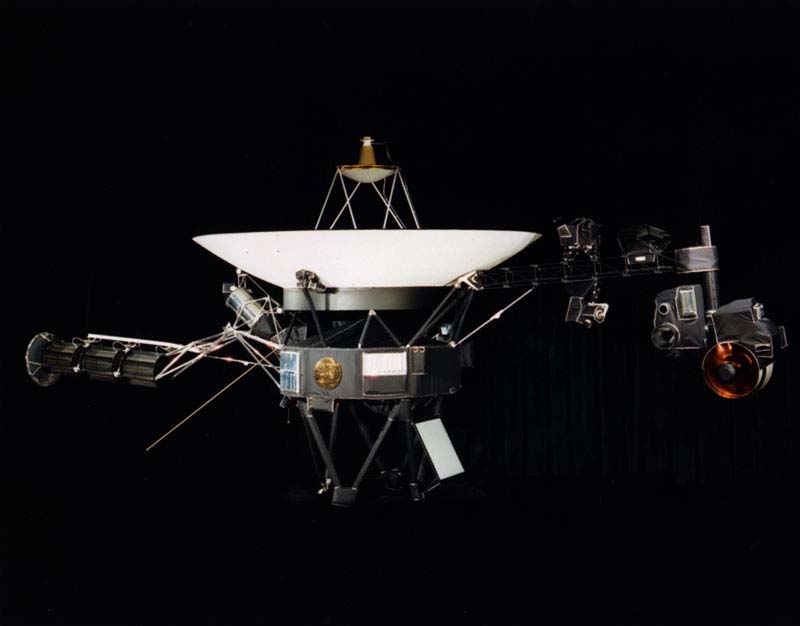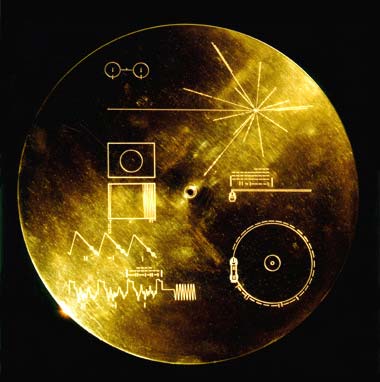NASA Voyager I
By:Alejandro
Have you heard of NASA’s satellite Voyager 1? Well Voyager 1 is a
satellite that gives information about space and planets it passes by.
Voyager 1 flew by Jupiter at a distance of 349,000 km in 1979, becoming
the third spacecraft to visit this planet. While near Jupiter, Voyager
1 returned images of Jupiter’s four largest moons, Lo, Europa,
Ganymede, and Callisto. Looking at the moon Lo, Voyager pinpointed new
moons inside the orbit of Lo. Voyager 1 is currently out of our solar
system, twice the distance of Pluto. On February 17, 1998, Voyager 1
passed the Pioneer 10 spacecraft to become the most distant human-made
object in the Universe.
A very interesting fact about Voyager I and
Voyager II is that they both may serve as messengers to
extraterrestrials that may come upon them. Inside Voyager 1 and Voyager
2, they both carry a 12-inch gold-plated copper disk, called the Golden
Record. This Golden Record carries information about music by Bach,
Beethoven, Louis Armstrong and Navajo Indians; the sounds of the surf,
wind, birds and whales; and images of human anatomy, planets in our
solar system, trees and various animals.
Voyager spacecraft
Golden Record


The reason why NASA sent the twin spacecrafts because NASA saw an opportunity to
send the twin spacecrafts to space. Jupiter, Saturn,
Uranus and Neptune would line up in such a way that single spacecraft
might hop from one to the next, using the gravity of each one to keep
speeding it on its way. Taking advantage of this alignment, which
occurs only once every 175 years, NASA approved the Voyager Project,
designed to send twin spacecraft to the outer solar system. Voyager 2
was launched first from Cape Canaveral, Florida, on August 20, 1977.
Voyager 1 was launched on a faster, shorter trajectory on September 5,
1977. NASA believes that both spacecraft will continue to operate and
send back important scientific data until its electrical power and
thruster fuel are exhausted in 2020. This topic is important because
the spacecraft ,Voyager 1, is the first human-made object to be the
farthest in space. This topic is also helpful because students get to
learn about Voyager.
Source:
www.nasa.gov
Return to Lion Times

